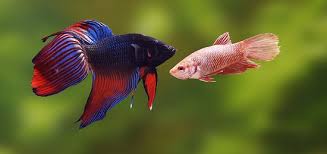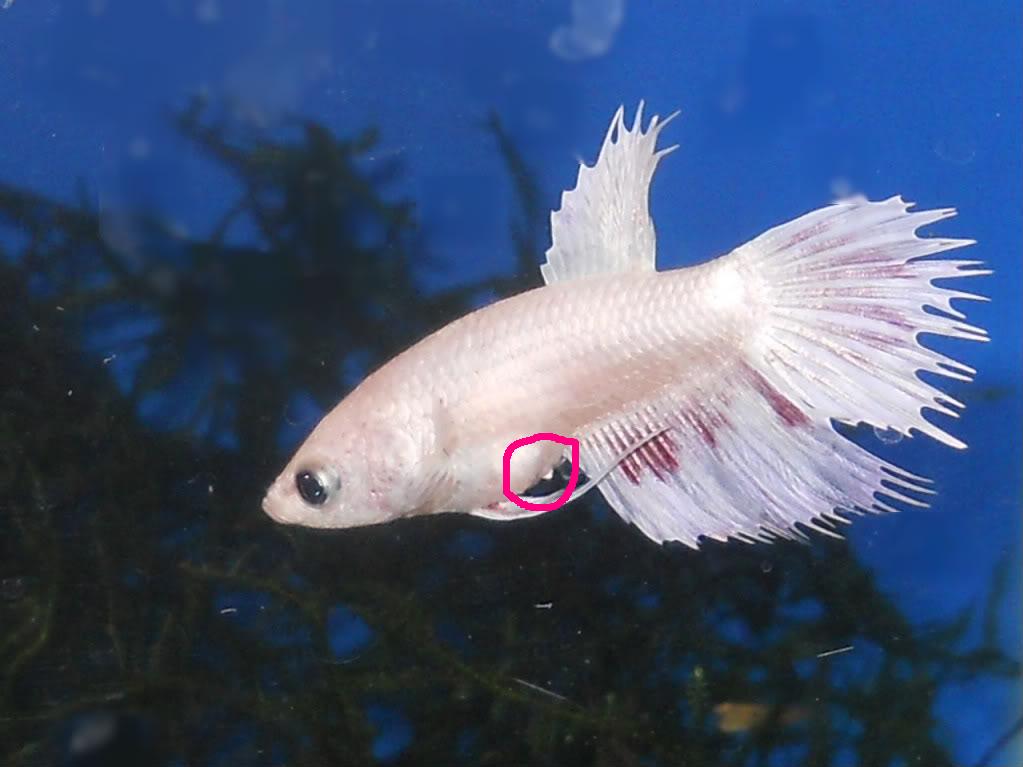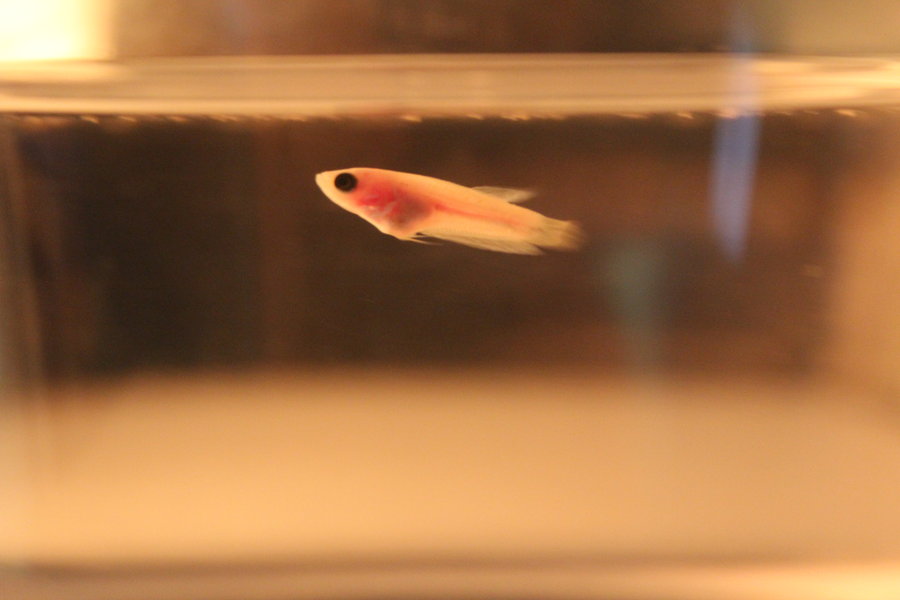Female betta fish are typically less ornate and decorated when compared to their male counterparts. For example, consider the pair below:

The male betta fish is seen on the left, with much larger fins and more elaborate colors. The female betta fish is on the right, with more dull colors. If a female betta fish is responsive to a male betta fish's mating efforts, her colors can darken. She will typically be smaller than the male betta fish.
Sorority

Unlike male betta fish, female betta fish can live together comfortably in the same tank. When they live together, the cohort is called a 'sorority'. Generally, a good number to keep together is 4-6 female betta fish. They enjoy having their own personal space, meaning that they should have enough foliage to hide in when they want to be alone. Often, plants or aquarium decorations can serve as good hiding places for betta fish.
Laying eggs

After female betta fish mate, the females will lay eggs. The eggs come from what is often termed an "egg spot," seen encircled above. The spot looks like a grain of salt, and is actually the ovipositor tube where the eggs will come out of. This is a way to identity a female betta fish if you are unsure of the sex.
Eggs and Baby Bettas
After mating, the pair should be separated. Male betta fish will place the eggs into a bubble nest, which he will create (see Male Betta Fish). The baby betta fish will hatch in about three days. They are called "fry" and are very tiny. Neither parent will care for the babies - they will find their own food as they grow.
